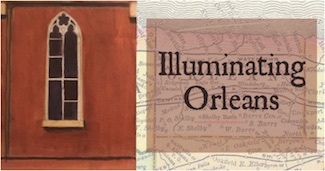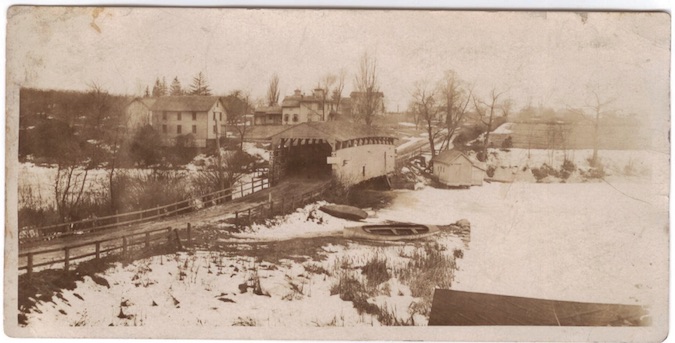Illuminating Orleans: 1851 diary shows hard work on farm for Carlton couple (Part 2)
By Catherine Cooper, Orleans County Historian
“Illuminating Orleans” – Vol. 2, No 2

On their Oak Orchard River Road farm in the Town of Carlton, Hosea and Sarah Ballou had experienced a snowy January (Vol 2, No.1), which had kept them close to home.
Hosea continued to record his daily activities. He did chores for neighboring farmers. He and Sarah kept cattle, sheep and a pig and he sometimes fished. He sold wheat and pork. He chopped wood and Sarah made candles to provide heat and light. He helped his brother-in-law butcher and received beef in return.
Journal of the Year 1851 continued.
(Each diary entry is of interest, however we will omit those that are similar)
February 4: Reed commenced cutting timber and I piled brush behind him.
February 20: Went to Ralph’s to help him kill a beef. Rained all day.
February 21: Went round and let the water off the wheat. Went to The Bridges. Ralph brought me home and brought my hams and some fresh beef.
February 25: Went to the PO and from there to the lake and helped draw the seine six times and got a bony sucker for my share
March 13: Went to Mrs. Porter’s and bought a sow with pig and made a pig pen.
March 15: Went to mill, carried 4 bushels wheat.
March 18: Drawed stone. Sarah went down to Uncle Miles. Sarah Miles came home with her and staid all night.
March 23: Sunday, warm. Sow had 8 pigs today.
March 29: Drawed stone, went to The Bridges. Ralph, Ashbel, Dick and myself went aspearing (sic) in the evening. Got 5 pickerel, 6 bullheads, 1 sucker, 2 bass, 1 sunfish.
In April he plowed and planted wheat. George Stillwell came to mend his boots. A surprise storm on May 2nd brought snow, “equal to any January weather.” He plowed the garden, bought garden seed and on May 26 sowed potatoes and carrots.
May 11: Fine growing time. First whippoorwill tonight.
Has anybody heard that distinctive bird song in Orleans County?
The diary provides an interesting reference to the marketing of apples the Brown family’s long involvement in apple production
May 20: Sorted apples for Ralph (Brown, Hosea’s brother-in-law)
May 21: Started for Buffalo with apples with Ralph.
May 22: On the canal in Lockport most of the forenoon, Rained.
May 23: Got in Buffalo this morning at 3 o’clock. A very hard thunder shower around 1 o’clock. Started home on the packet Niagara at 7 o’clock this afternoon. A heavy frost on the canal.
May 24: Got in Albion at 9 o’clock. Rode home with O. Scofield.
As Helen Allen observes: Ralph Brown’s home storage must have been good to have had salable apples in the latter part of May.
After a day’s rest, Hosea washed sheep on May 26, sheared the sheep on June 6 and on June 18 sold the wool to D.V. Simpson in Albion for 36 cents per pound.
Hosea also fulfilled his civic duties. He paid his school taxes, attended a town meeting and “worked on the roads” on June 24 and 25. Towns were responsible for building and maintaining roads, land owners were required to work on the roads a few days every year in place of paying a road tax.
He references attending meetings on several Sundays, at the stone schoolhouse and “down home.” Members of the Presbyterian congregation met in homes or schoolhouses prior to the construction of their church in 1855.
Survival required hard work and physical labor. Yet there seemed to be plenty of socializing. Their friends and Sarah’s sisters often came “avisiting” and stayed overnight. The entry for July 4 is brief: Went to The Lake.
A well-earned vacation day.






























































